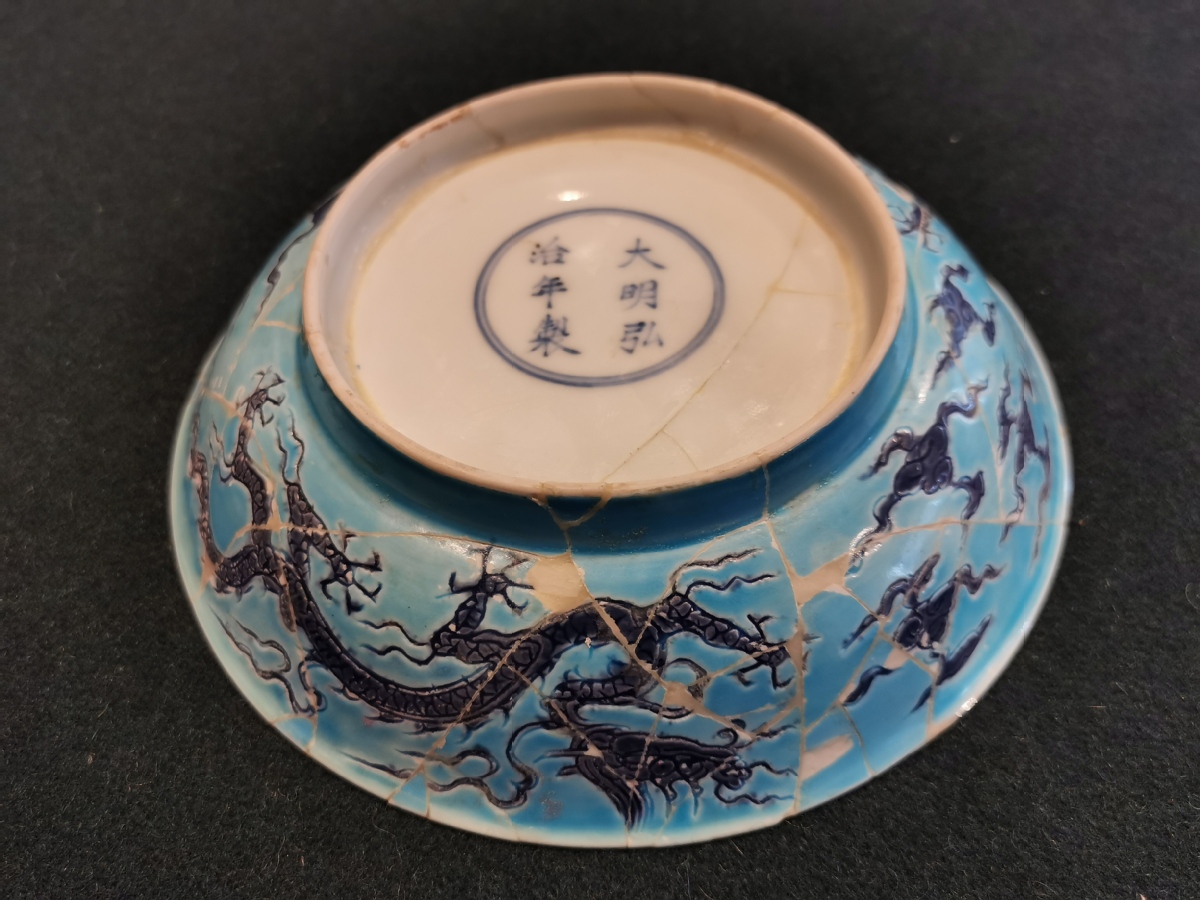Exhibition of imperial porcelain reveals changes over centuries
 0 Comment(s)
0 Comment(s) Print
Print E-mail China Daily, August 27, 2020
E-mail China Daily, August 27, 2020

"Anyone who copied the shapes and patterns of ceramics from the imperial kiln would certainly be executed," Wang says.
"If the color was not bright enough or the dragon was not perfectly drawn, the porcelain would be broken. Not even the slightest blemish was acceptable. But (the broken pieces) just prove how exceptional the surviving imperial porcelain items in Beijing are."
It's a precious opportunity to view these artifacts, since many national treasures aren't put on public display.
An unfinished cup and a broken shard belong to what is commonly considered one of the most valuable antique varieties.
A "chicken cup", so called because it bears chicken patterns, created during the reign of Chenghua (1465-87) is celebrated for its exquisite craftsmanship and demanding technique combining overglaze colors and underglaze blue.
In 2014, Chinese art collector Liu Yiqian bought a similar cup for about $45 million, setting a record for Chinese art sold at an auction.
Even the Palace Museum has only one chicken cup. Several were taken to Taipei in 1949.
According to Wang, the prototype of today's long dates back over 5,000 years to the late period of Yangshao culture.
fe987fd1-cdfc-4c38-a460-e266f07439d3.jpeg)




Go to Forum >>0 Comment(s)